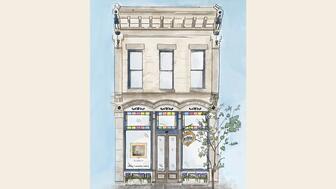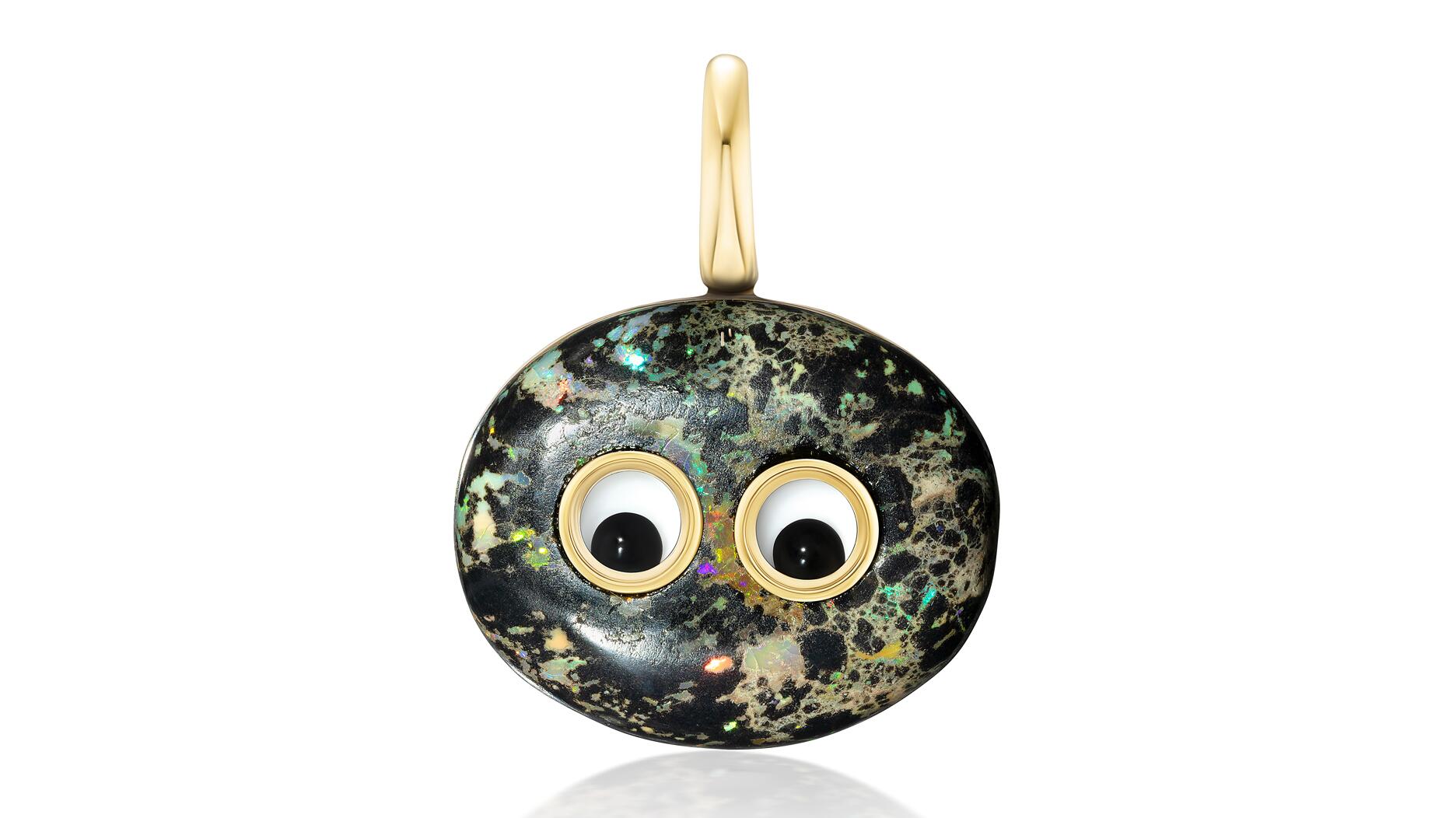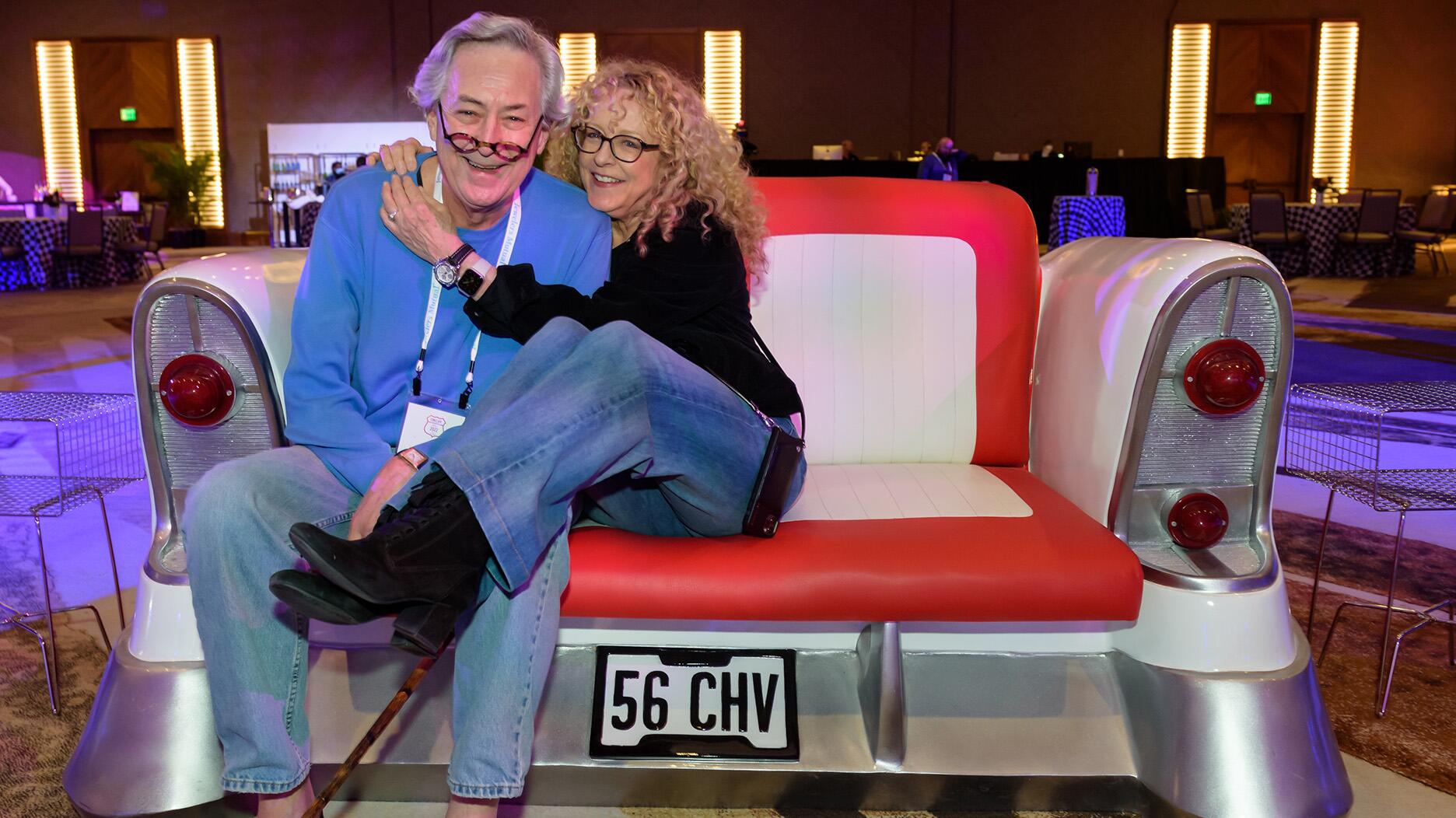The luxury goods company said founder Ippolita Rostagno will remain at the brand’s helm.
A Q&A with the New CEO of Signet Jewelers
Gina Drosos talks about the retailer’s image among women, digital marketing and why the company is “not there yet” when it comes to targeting women who buy jewelry for themselves.

In August, Signet Jewelers selected Virginia “Gina” C. Drosos as its new CEO. She succeeded Mark Light to become the first female CEO for the retailer, which traces its roots back to the opening of the first H. Samuel store in 1857.
A Signet board member for five years prior, she takes over at a time when the retailer is in need of change, both in its stores and in its culture.
On Jan. 12 in New York, Drosos sat down with National Jeweler and answered questions about the retailer’s image among women, digital vs. traditional marketing, and why the company is “not there yet” when it comes to targeting women who buy jewelry for themselves.
This interview has been edited for length and clarity.
National Jeweler: Do you feel like Signet is doing enough in its advertising, and in its product mix, to appeal to women who are buying jewelry for themselves?
Virginia Drosos: I think that we’re moving in that direction.
We have for many, many years had the aspiration of being the best in bridal. Based on internal research, we understand that approximately 2.5 to 2.6 million engagements will occur next year, and with advanced data analytics and more targeted and personalized marketing, we can reach them and communicate with them and educate them better than ever before.
We’ve added 450 pages of content to our websites in just the last six months to enhance the education process.
NJ: For bridal purchases.
VD: And for fashion purchases. Bridal we’ve had as an aspiration for many years. Fashion we’ve really just called out as an aspiration recently. For the holiday season this year, we had 50 percent more new items in our fashion assortment than we did last year. We did significantly more targeted marketing to women, and we saw fashion perform well within our portfolio. But we’re not there yet. We haven’t shifted our assortment to be as irresistible and contemporary as it can and will be.
I recently had a breakfast with many of our key vendors where I expressed to them our desire to have the most irresistible product assortment. I asked them to be innovators alongside us and to bring us the best new and innovative ideas first, not only in bridal but also in fashion and gifting.
NJ: Looking ahead to the next major holiday, Valentine’s Day, does this mean we won’t be seeing
VD: So, speaking of television, I hope that as we are shifting our marketing mix to be more targeted, personalized and relevant, people won’t just think of who we’re targeting based on our TV commercials. In the past, that would have been a very fair question, because we were spending close to 90 percent of our marketing budget on TV advertising. But already this past holiday season we’ve reduced that significantly and more than doubled our digital spend.
This Valentine’s Day, you won’t see a TV ad from a Signet-owned store targeted at the female self-purchaser, but we certainly will have digital marketing and social marketing efforts speaking to her.
“We have a huge opportunity to grow our share and our company by moving more into that segment, and we’re beginning to do that already with some of our more targeted marketing and assortment, but we have plenty of room to grow.” — Signet CEO Virginia Drosos on having the right product and marketing to appeal to female self-purchasersNJ: And that’s where you feel like that customer’s living, within the digital and the social sphere?
VD: I think that’s where many millennial customers are living. So one of the great things about the size of Signet is that we have the opportunity to reach our customers through marketing. And it’s a competitive advantage for us that smaller companies don’t have. But we have to be very customer-first in how we think about our media mix and our marketing messages and how we provide them the right kind of education and service in the right place at the right time.
I’ll give you a great example. For many years, women who have gotten engaged do Pinterest boards about their entire wedding. They pin the kind of ring they’re interested in having well before they ever get engaged. This is something that now we’re becoming very active in understanding, so that we can see: what are the trends among women who will be getting engaged, and how do we make product available both online and in-store that will delight them? Leveraging social media can be a way that we can get out in front of trends and then, I think, help to set and create trends.
I’ll give you one example on the fashion front. The whole concept of stacking and layering bracelets and necklaces is something that we’ve seen coming. We made it a major part of both our TV and our online digital marketing over the holidays, and we drove significant sales in stacking and layering necklaces, not only at Signet but within the industry, and we drove a trend toward yellow gold.
NJ: During Signet’s last earnings call, you talked about a lot about the credit account processing problems in the stores being a big issue this holiday season. But there has been speculation that The Washington Post story detailing claims of sexual harassment and discrimination at the company has turned off some women from shopping at certain Signet stores.
Do you think you have some work to do to repair the company’s image among women?
VD: This is a topic that is critically important to me and has been a strong factor in my leadership throughout my career. I believe that diversity is a business strategy, not just a human resources priority, that diverse organizations deliver better results and that as a leader, one of the things, by definition, you can never see are your own blind spots. And so surrounding yourself with a diverse team that feels comfortable to share any and all ideas and feedback is critically important.
Obviously, as a member of the board I was aware of all of the external allegations that have been leveled against Signet, and I have from my very first day on the job been very clear with our organization that diversity and inclusion is one of my priorities. We have put new programs in place that I’m very excited about. We rolled out some business resource groups, affinity groups for women, for LGBTQ-plus, and for other affinities, like young professionals and multi-cultural, just this week.
NJ: What do you mean by affinity groups?
VD: These are employee-led groups within the company that focus on developing leaders for a particular demographic or psychographic affinity.
This is an important priority for me personally, and I think an important priority for all women in leadership and business. I recently attended a women’s executive forum where the results of a McKinsey study and a recent Korn Ferry study were presented, and they showed that only 6 percent of executive leadership is women. We haven’t made nearly as much progress as we want.
Signet actually has one of the 25 most diverse boards in the S&P 500, as stated by a recent study in The Wall Street Journal. We have 40 percent women on our board of directors. I have 40 percent women on my executive team. When (Chief Financial Officer) Michele Santana and I do earnings calls, we are one of the few all-women teams in the S&P 500. And 73 percent of our employees are women and 70 percent are women managers, so we actually have a good pipeline to that first layer of management.
NJ: Those numbers are fantastic and I actually didn’t realize that. But I’m asking, what are your thoughts about the external perspective on Signet?
VD: That I think we have to position our brands like Kay, Jared, Zales and Piercing Pagoda as being leaders in the industry—leaders in terms of putting customer first and providing the best product and experience, and leaders in every aspect of corporate and social responsibility, which starts with people inside our company. So that means diversity and inclusion, it means responsible sourcing, it means taking the lead in the industry to make sure that we are all doing the right thing so that customers can have a high level of trust in what they’re buying.
A company like Signet absolutely has to lead in these areas. And I think that any time allegations like that come out in the press, it can be a setback. But it is my clear agenda to move us past that and to retake the lead in the industry to help drive growth and to build consumer confidence and employee confidence in where we’re headed.
“Diversity is a business strategy, not just a human resources priority. Surrounding yourself with a diverse team that feels comfortable to share any and all ideas and feedback is critically important.” — Signet CEO Virginia DrososNJ: Signet has about 3,600 stores, and there are malls where you have a Kay and a Zales, or a Piercing Pagoda and a Piercing Pagoda Too. Have you given much thought to what the right size store fleet is for you in the United States?
VD: So this is an area in my first months in the position that I’ve been working on with my leadership team, and am learning quite a bit about and digging into in an important way. We have for the last several years declined our store footprint within malls, but we have continued to build off-mall formats. And as I’ve said on a number of our earnings calls, even so far those off-mall formats have been performing very well for us.
We’re really taking a customer first approach on this. We want to be where customers need us to be to create that perfect omnichannel, seamless shopping experience. And I think we have an opportunity to continue to think about how to change and evolve our store footprint to do that in the best possible way.
NJ: Is it your belief, then, that at the end of the day, consumers still want to buy fine jewelry in a store?
VD: I think it’s a mix. One of the things that I’m very excited about is our R2Net acquisition in which we acquired breakthrough visualization that helps customers be able to visualize a diamond better than ever before digitally and that can be available both online and in store. We may have 300 to 500 diamonds available in a store for a customer to buy. But we can make 100,000 diamonds available to that same customer with a screen in the store because we have a digital virtual vault now of diamonds.
So I think we can transform visualization of diamonds, just as one example. And that can open an opportunity for us to not only grow our online business but to create more trust and excitement and closure in store.
What we’re seeing today is that most customers begin their journey online and, to your point, most customers still end their journey in a store and we intend to have the very best service and education and counseling in both of those places.
NJ: One last question: What is your personal favorite piece of jewelry?
VD: I’d have to say my wedding ring. My husband and I designed them together many years ago and redesigned them for our 10th wedding anniversary. If I had to give you one other, it’s a bracelet that my daughter gave me last Christmas. It’s a very cheap piece of jewelry but she had it engraved on the inside.
Jewelry, for me, like many customers, is all about a meaningful moment, about a relationship, about self-expression. This is why I wanted to come on board with Signet, it’s why I wanted to join the board in the first place, it’s why I fell in love with the company over five years. We have a mission that is really, really exciting and transformative for so many people—to help them celebrate life and express love in all the many ways they want to do that, whether that’s a female self-purchase or expressing emotion in a relationship.
Editor's note: This story was updated post-publication to correct a figure about the executive team of Signet CEO Virginia Drosos. Drosos’ executive team is 40 percent women, not 40 women, as previously stated.
The Latest

Laura Burdese, who joined the Italian luxury brand in 2022, will take on the role in July.

Need a gift for the cat lover who has everything? Look no further than our latest Piece of the Week.

How Jewelers of America’s 20 Under 40 are leading to ensure a brighter future for the jewelry industry.

It purchased the “Grosse Pièce,” an ultra-complicated Audemars Piguet pocket watch from the ‘20s, for a record-breaking price at Sotheby’s.


The lab-grown diamond grower now offers custom engagement and fashion jewelry through its Kira Custom Lab Jewelry service.

The boutique is slated to open this week inside Terminal 8, offering pre-owned Rolex watches and more to international travelers.

Roseco’s 704-page catalog showcases new lab-grown diamonds, findings, tools & more—available in print or interactive digital editions.

Sponsored by Digital Monitoring Products

The special-edition egg pendant ingested in a New Zealand jewelry store was recovered after a six-day wait.

Associate Editor Natalie Francisco plays favorites with Piece of the Week, selecting a standout piece of jewelry from each month of 2025.

The “Love and Desire” campaign is inspired by the magic that follows when one’s heart leads the way, said the brand.

Two awardees will receive free tuition for an educational course at the Swiss lab, with flights and lodging included.

Berta de Pablos-Barbier will replace Alexander Lacik at the start of January, two months earlier than expected.

Sotheby’s held its first two jewelry sales at the Breuer building last week, and they totaled nearly $44 million.

Winners will receive free registration and lodging for its fourth annual event in Detroit.

Here are six ideas for making more engaging content for Instagram Reels and TikTok, courtesy of Duvall O’Steen and Jen Cullen Williams.

The honorees include a notable jewelry brand, an industry veteran, and an independent retailer.

Carlos Jose Hernandez and Joshua Zuazo were sentenced to life without the possibility of parole in the 2024 murder of Hussein “Sam” Murray.

Yood will serve alongside Eduard Stefanescu, the sustainability manager for C.Hafner, a precious metals refiner in Germany.

The New Orleans jeweler is also hosting pop-up jewelry boutiques in New York City and Dallas.

Set in a Tiffany & Co. necklace, it sold for $4.2 million, the highest price and price per carat paid for a Paraíba tourmaline at auction.

The jeweler’s “Deep Freeze” display showcases its iconic jewelry designs frozen in a vintage icebox.

Take luxury gifting to new heights this holiday season with the jeweler’s showstopping 12-carat sphene ring.

This year's theme is “Unveiling the Depths of the Ocean.”

In its annual report, Pinterest noted an increase in searches for brooches, heirloom jewelry, and ‘80s luxury.

Starting Jan. 1, customers can request the service for opal, peridot, and demantoid garnet.

























